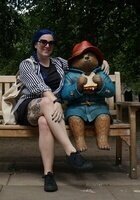All SAT II US History Resources
Example Questions
Example Question #2 : Summary Of U.S. Intellectual And Cultural History From 1790 To 1898
The use of art and literature to depict ordinary life in a direct manner describes which American artistic movement?
The Hudson River School
Realism
Luminism
Impressionism
Tonalism
Realism
Realism refers to an attempt to depict the subject matter in an accurate and direct manner. It was often used in the United States to depict ordinary men or women going about daily life in a realistic manner. It is considered one of the most important artistic movements in European and American history.
Example Question #3 : Summary Of U.S. Intellectual And Cultural History From 1790 To 1898
Who authored the anti-slavery novel Uncle Tom’s Cabin?
Mark Twain
William Lloyd Garrison
Harriet Beecher Stowe
Abraham Lincoln
Stephen Douglas
Harriet Beecher Stowe
Uncle Tom’s Cabin was authored by Harriet Beecher Stowe and published in 1852. The author was a devout abolitionist and the novel centers on the character Uncle Tom—a long suffering black slave. The book was a seminal influence in growing the abolitionist movement. It became the best-selling novel of the nineteenth century and was a significant literary influence on the nature of black identity in the United States.
Example Question #272 : Sat Subject Test In United States History
Which of these statements best describes transcendentalism?
The thought process of the individual should be directed towards its greatest possible usage.
There is an inherent unity between man and nature.
Individual actions are right so long as they provide happiness for the individual.
Information derived from math and scientific exploration is the only true knowledge.
God is a “watch-maker” who sets the rules of the universe and then steps aside.
There is an inherent unity between man and nature.
Transcendentalism was a philosophical movement in the early nineteenth century. It explicitly opposed the teachings of the Harvard Divinity School. Transcendentalists argued that there is an inherent unity between man and nature, and both man and nature are inherently good. Central to transcendentalist beliefs is the notion that organized religion and political parties corrupt the nature of the individual and are therefore deplorable. Influential transcendentalists include Ralph Waldo Emerson and Henry David Thoreau.
Certified Tutor
Certified Tutor
All SAT II US History Resources




